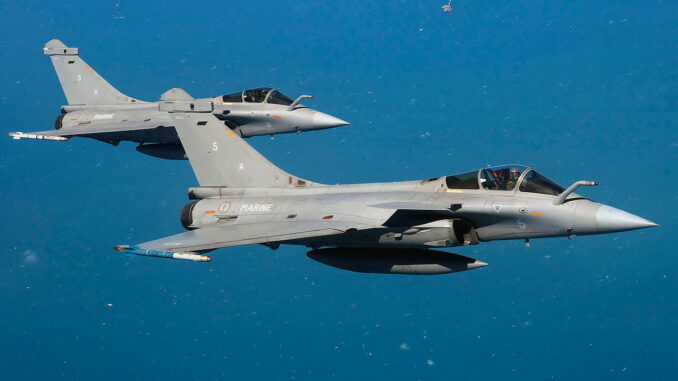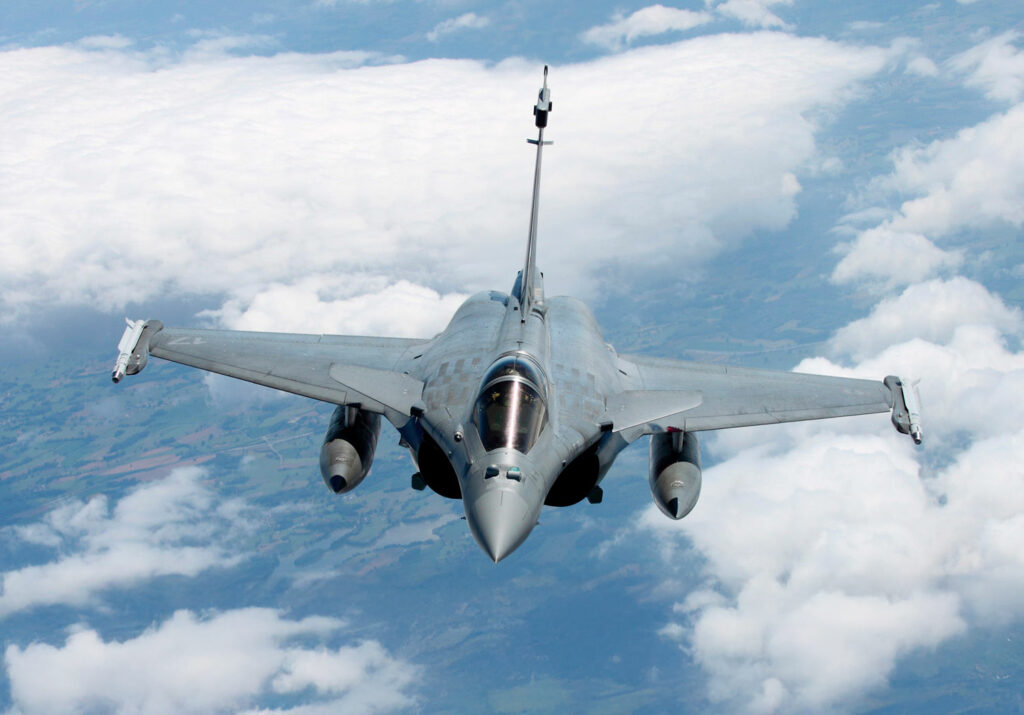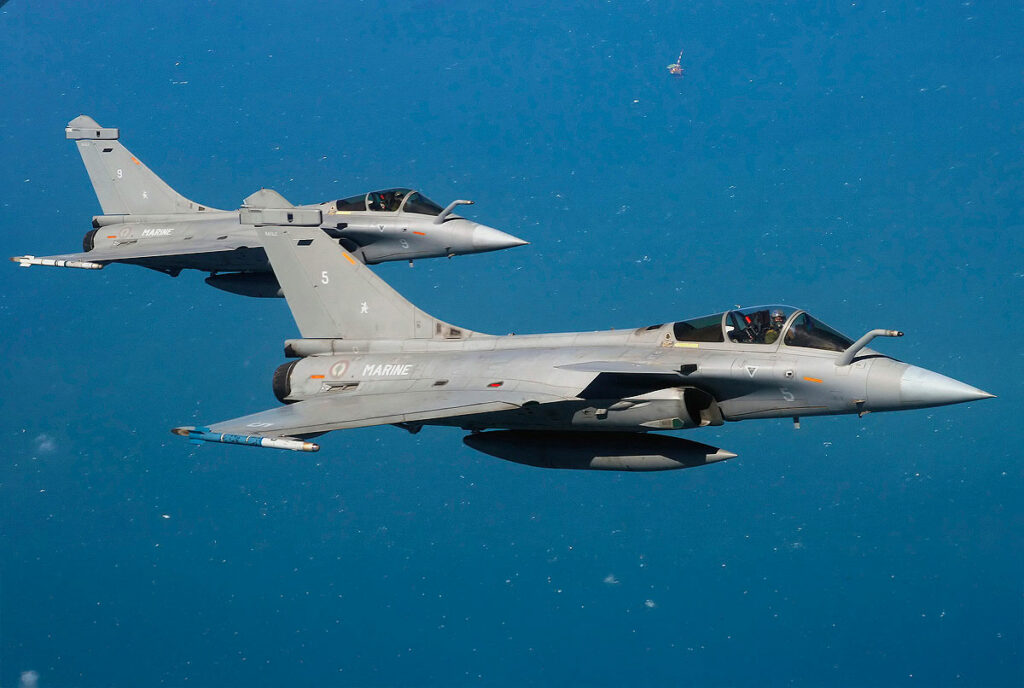
The Dassault Rafale M contract with the Indian Navy will be signed at Aero India 2025. Details on the stakes, factors and impact of this strategic project.
The contract between Dassault Aviation and India for the F4-standard Rafale M will be officially signed in February 2025. This program, designed to equip the Indian Navy, marks a milestone in Franco-Indian military cooperation. Let’s take a look at the factors delaying the signing and its potential impact.
A decisive choice for the Indian Navy
The Dassault Rafale M will replace the Russian-made MiG-29K Fulcrum-D currently in service with the Indian Navy. These aircraft, although modern at the time of their acquisition, have shown weaknesses in terms of maintenance and availability. The Rafale M, equipped with the latest F4-standard technology, will offer enhanced air combat, interception and precision strike capabilities.
With a range of 1,850 km and a payload of 9.5 tons, the Rafale M is designed to operate effectively from aircraft carriers. Its versatility and reliability make it a strategic choice for the Indian Navy, wishing to strengthen its capabilities in the Indian Ocean and Asia-Pacific zone.

Why is the signature delayed?
Although it was announced that the Rafale M would win the Maritime Multi-Role Carrier-Based Fighter (MRCBF) program in the summer of 2023, the official signature will only take place at Aero India, an air show scheduled for February 10-14, 2025. There are several reasons for this delay:
- Aero India: a strategic event
Aero India has become a major event for the global aerospace industry. The event enables manufacturers to conclude contracts in a symbolic setting and under the international spotlight. In 2023, over 600 exhibitors from 80 countries took part, underlining the importance of this show.
The presence of competitors such as Lockheed Martin (F-35A Lightning II) and Sukhoi (Su-57 Felon) accentuates the commercial stakes. The Indian government is keen to maximize the media impact by signing this contract at this flagship event.
- Internal changes at Dassault Aviation
In 2024, Charles Edelstenne, head of Groupe Industriel Marcel Dassault (GIMD), handed over to Eric Trappier, previously CEO of Dassault Aviation. This change of leadership slowed down certain strategic negotiations. Eric Trappier played a key role in the Rafale’s commercial success, particularly in the Asia-Pacific region. - Complexity of negotiations
Discussions with India include complex requirements, such as technology transfer and local production. These elements, valued at several billion euros, often prolong negotiations. According to the Indian authorities, the final adjustments will be finalized by February.
The impact of the Clemenceau 25 mission
The French aircraft carrier Charles de Gaulle is currently taking part in joint exercises with the Indian Navy as part of the Clemenceau 25 mission. This presence in the Asia-Pacific reinforces military cooperation between France and India.
These maneuvers include air defense, anti-submarine warfare and shipboard operations management exercises. They illustrate the capabilities of the Rafale M in complex operational environments. This regular collaboration also serves to strengthen the trust between the two nations.
The Rafale M versus its competitors
In the airborne fighter market, the Rafale M stands out for a number of technical reasons:
- Versatility: Capable of carrying out air superiority, reconnaissance and ground strike missions.
- Advanced systems: AESA RBE2 radar, Spectra electronic warfare and data link.
- Maritime capabilities: catapult compatibility and carrier arrestors.
In comparison, the American F-35A Lightning II offers advanced stealth, but at a high unit cost, estimated at 85 million euros per aircraft. Russia’s Su-57 Felon, meanwhile, suffers from production problems and unproven real-world performance.

Prospects for Dassault Aviation
With this contract, Dassault Aviation consolidates its position in the international multi-role fighter market. Since 2015, France has exported 319 Rafales to countries such as Qatar, Egypt, and the United Arab Emirates. This commercial success generates significant economic benefits for French industry.
For India, this partnership strengthens its naval aviation capabilities while diversifying its military procurement. In 2024, India’s defense budget reached 70 billion euros, confirming the importance of its investments in cutting-edge technologies.
The Rafale M contract with the Indian Navy, expected at Aero India 2025, represents a strategic turning point for Dassault Aviation and Franco-Indian cooperation. Despite the challenges, this agreement reinforces the Rafale’s position as a key player in the world’s air and sea forces. The Rafale M’s presence in India could also pave the way for new partnerships in the Asia-Pacific region, confirming its commercial and technological success.
War Wings Daily is an independant magazine.